Did you know that July is World Watercolor Month? Whether you’re a pro, or have never really tried watercolor before, this is the perfect time to break out a sketch pad and get creative! A great way to start is by making a watercolor painting of a favorite memory. Don’t have paints? No problem! We’re going to watercolor with markers instead! Grab some Tombow Dual Brush Pens, and let’s get started.
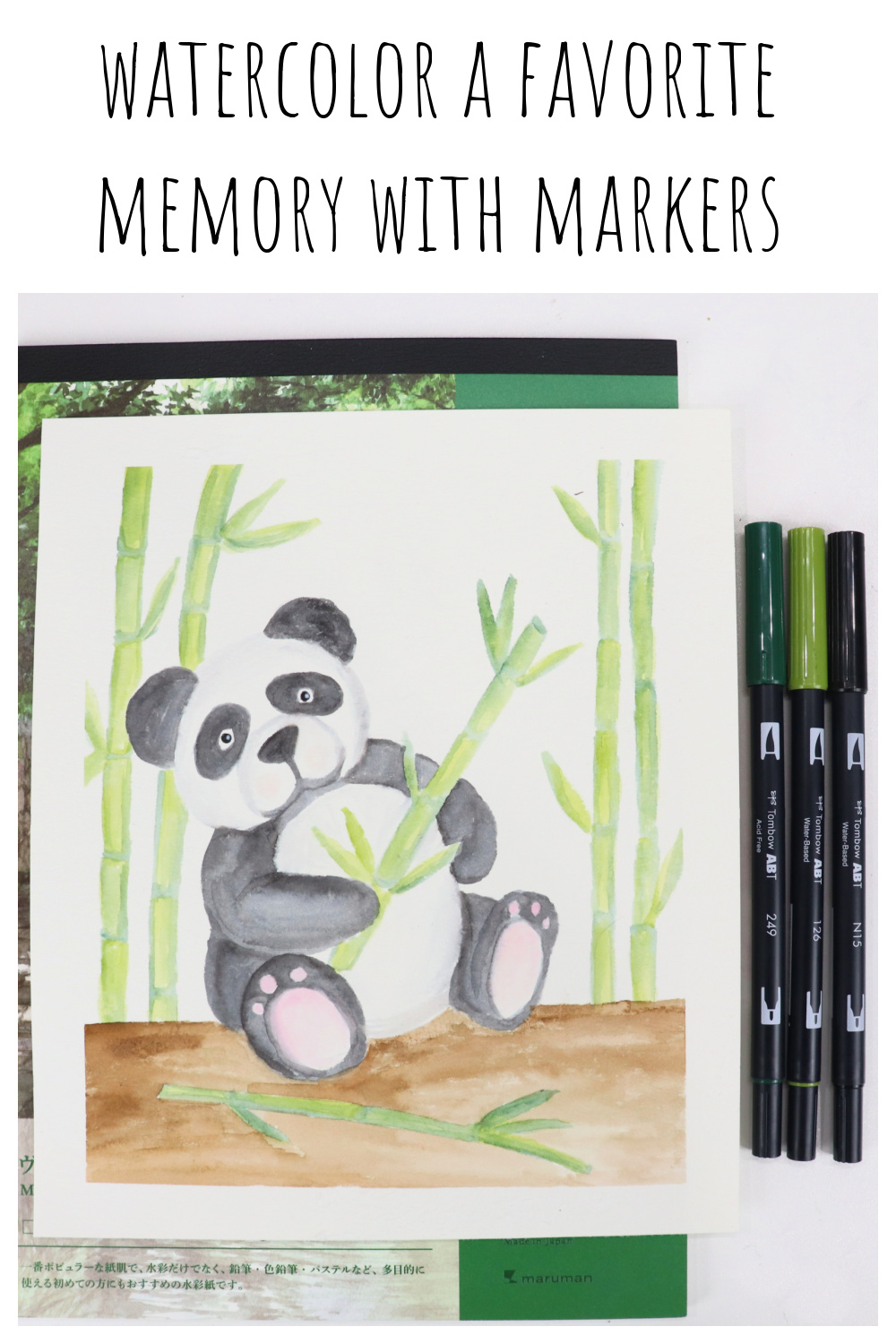
Materials
- Maruman Vif-Art Watercolor Paper Pad, Medium Grain, A4
- Tombow Dual Brush Pens, your choice of colors
- Tombow Blending Palette
- Mono Graph Mechanical Pencil
- Tombow MONO Eraser
- Paintbrushes
- Water
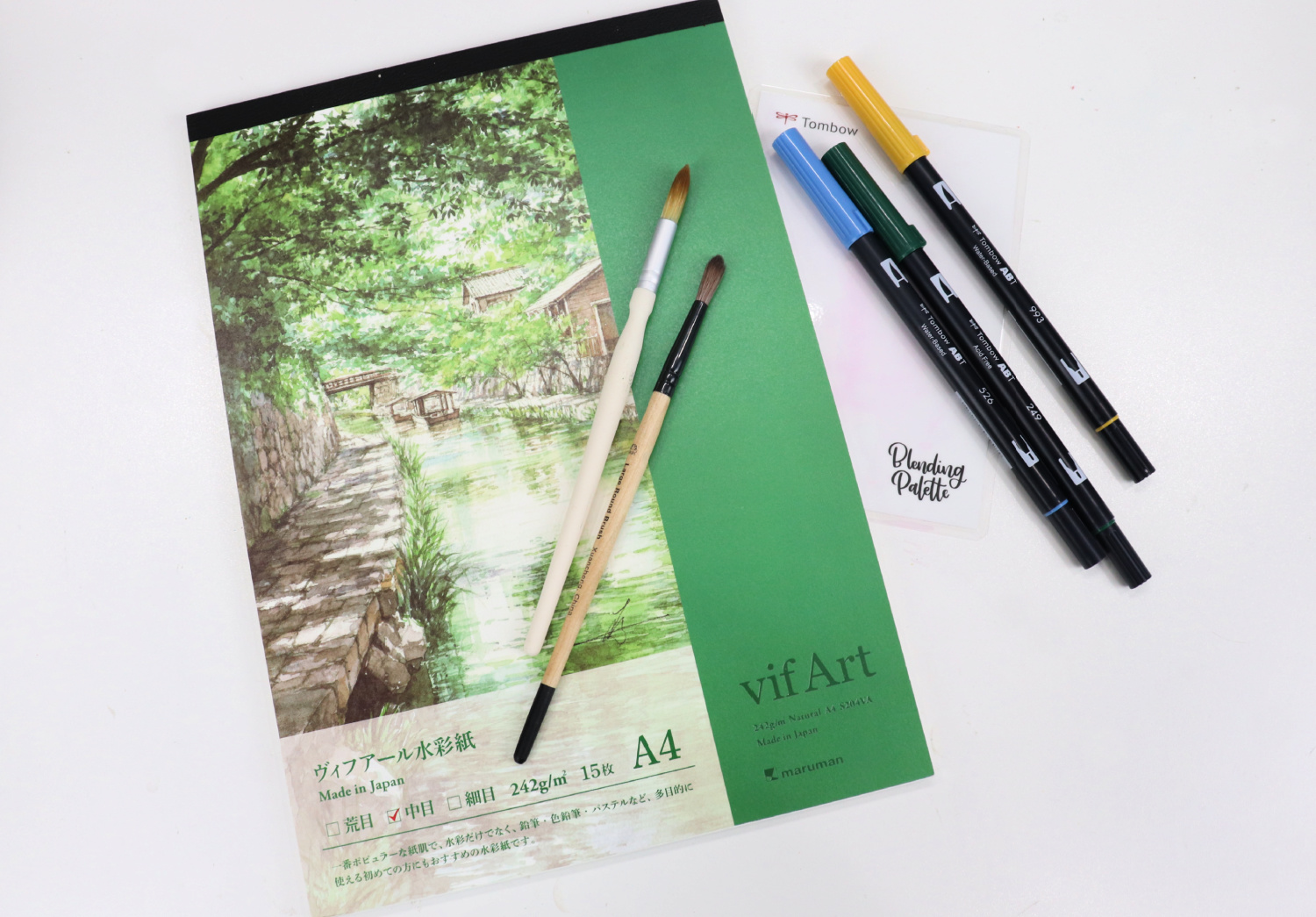
The memory I (Amy from Amy Latta Creations) chose to paint was from 2017 when our family traveled to Chengdu, China, to adopt our son Nathan. While we were there, we visited the Panda Reserve and got to see so many adorable pandas, including a few babies, in their native habitat. They were wonderfully roly-poly, and so calm as they sat around munching on tons of bamboo stalks. While your memory will be different from mine, of course, you can follow the same basic steps to create your artwork. The most important thing to remember is not to compare your work to anyone else’s; just have fun and let yourself create!
Instructions
Step 1: Tape around the edges of your image.
I removed a piece of the watercolor paper from my Maruman Sketch Pad and taped it to my table using washi tape. This serves a double purpose; it holds my paper still while I work, and it creates a uniform white border around my painting.
Step 2: Sketch your image using the MONO Graph Mechanical Pencil.
I started by sketching the basic bear shape, which you can find in my book Doodle All the Animals. Then, I added a stalk of bamboo in his hand. Next, I sketched very basic outlines of four stalks behind the bear, and one more in front on the ground. You can do the same for your memory, lightly sketching the basic shapes of animals, buildings, nature, and/or people.
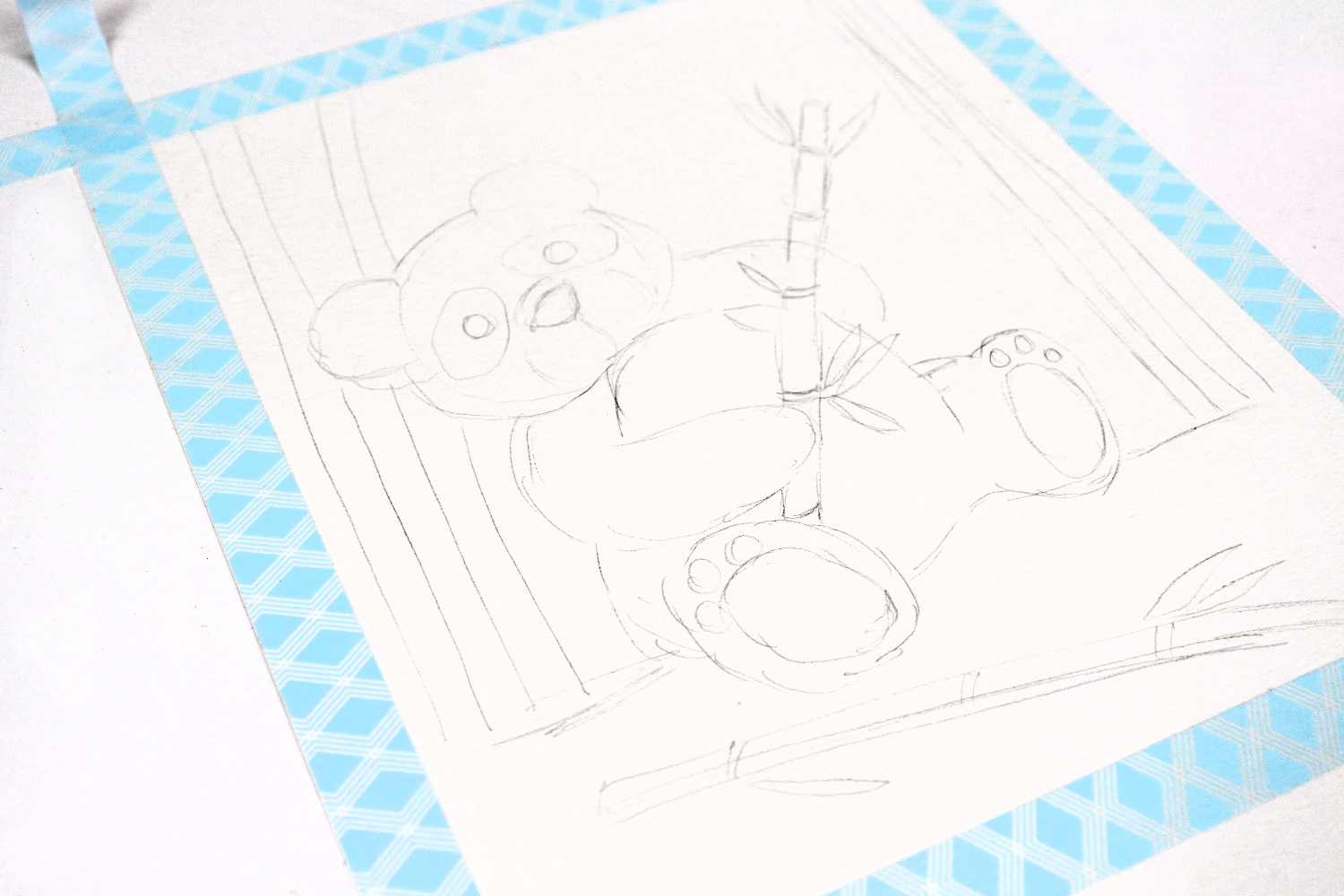
Step 3: Use the brush end of the Dual Brush Pens to apply color onto the Blending Palette.
Because this surface is non-absorbent, the ink will pool up instead of soaking in, and you’ll be able to pick it up with your wet paintbrush. If you don’t have the palette, you can get a similar effect with a plastic baggie.
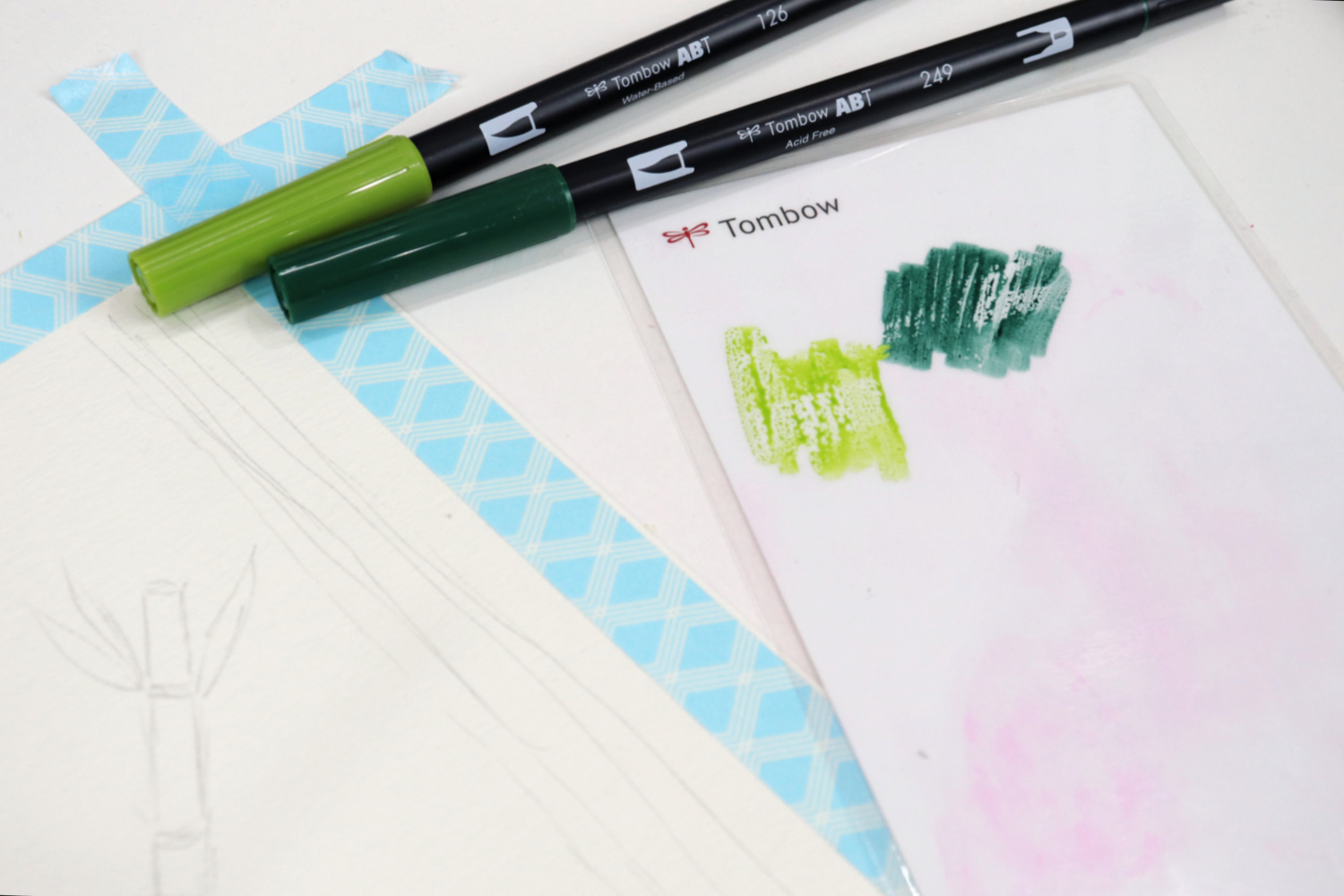
Step 4: Dip a wet paintbrush into the ink, then use it to add color to your sketch.
I started by using light green (126) to create the bamboo stalks.
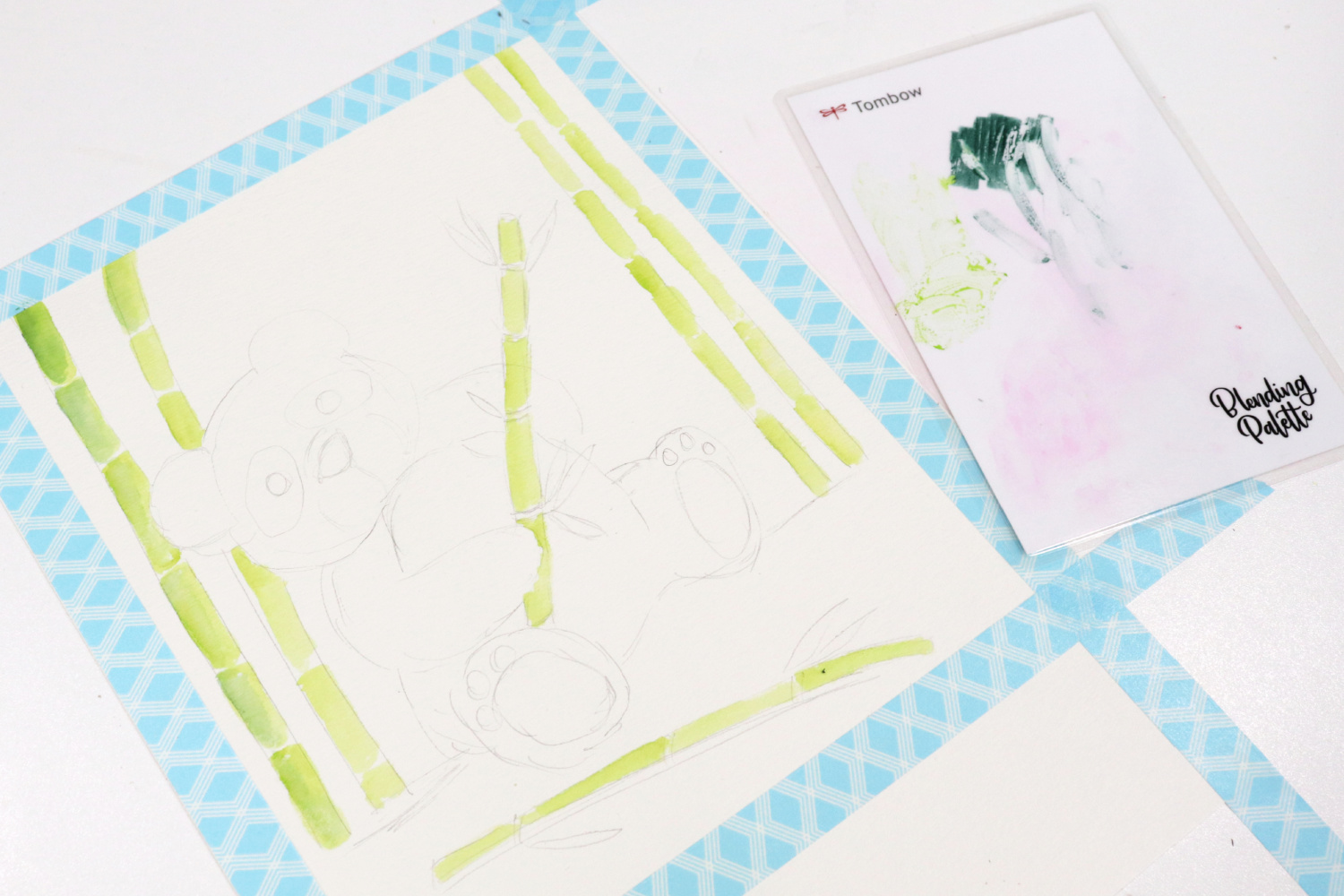
Then, I went back with a darker green (249) to add some shading and details. Make sure to rinse your brush clean before switching colors.
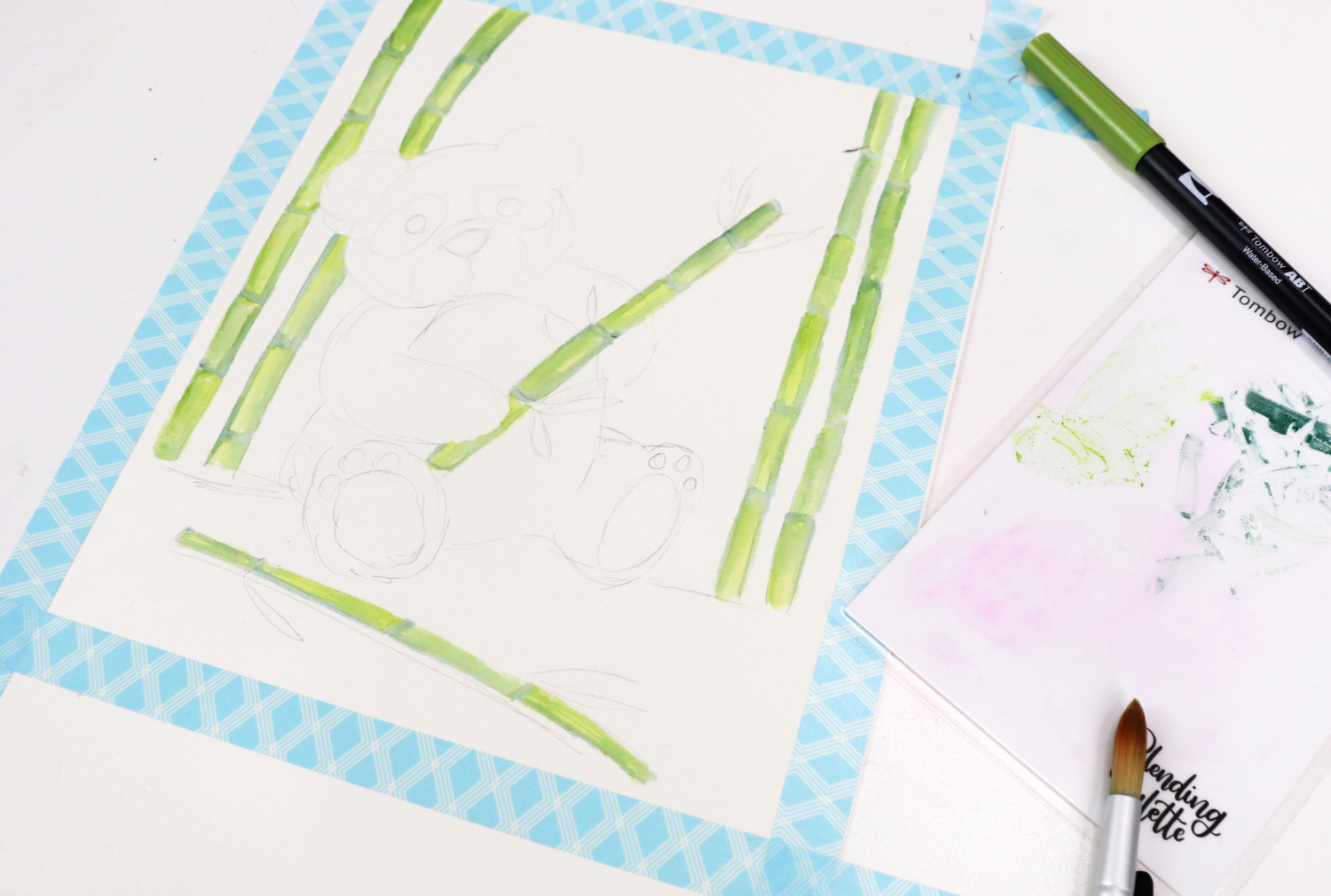
Once my bamboo was colored in, I used black to color the ears, eyes, arms, and legs of my panda. Then, I gently spread some of the black into the white areas to create the muzzle and the outer edges of the face and belly. For areas where you want darker/more color, paint over them a second time. This is how I made certain parts of the arms, legs, and feet darker to show the outline.
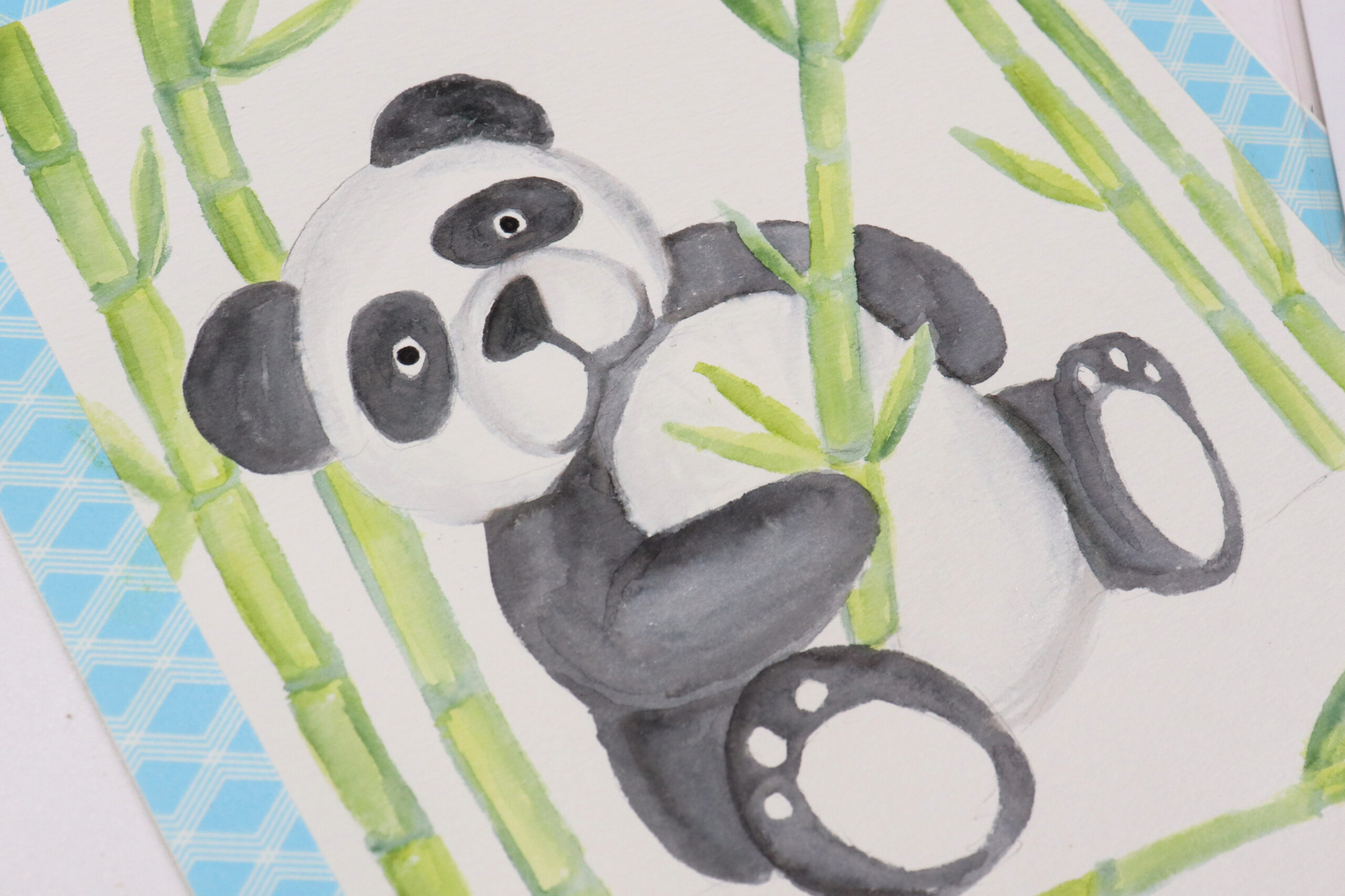
Next, I used brown for the ground, and I finished by adding pink to the feet and the cheeks.
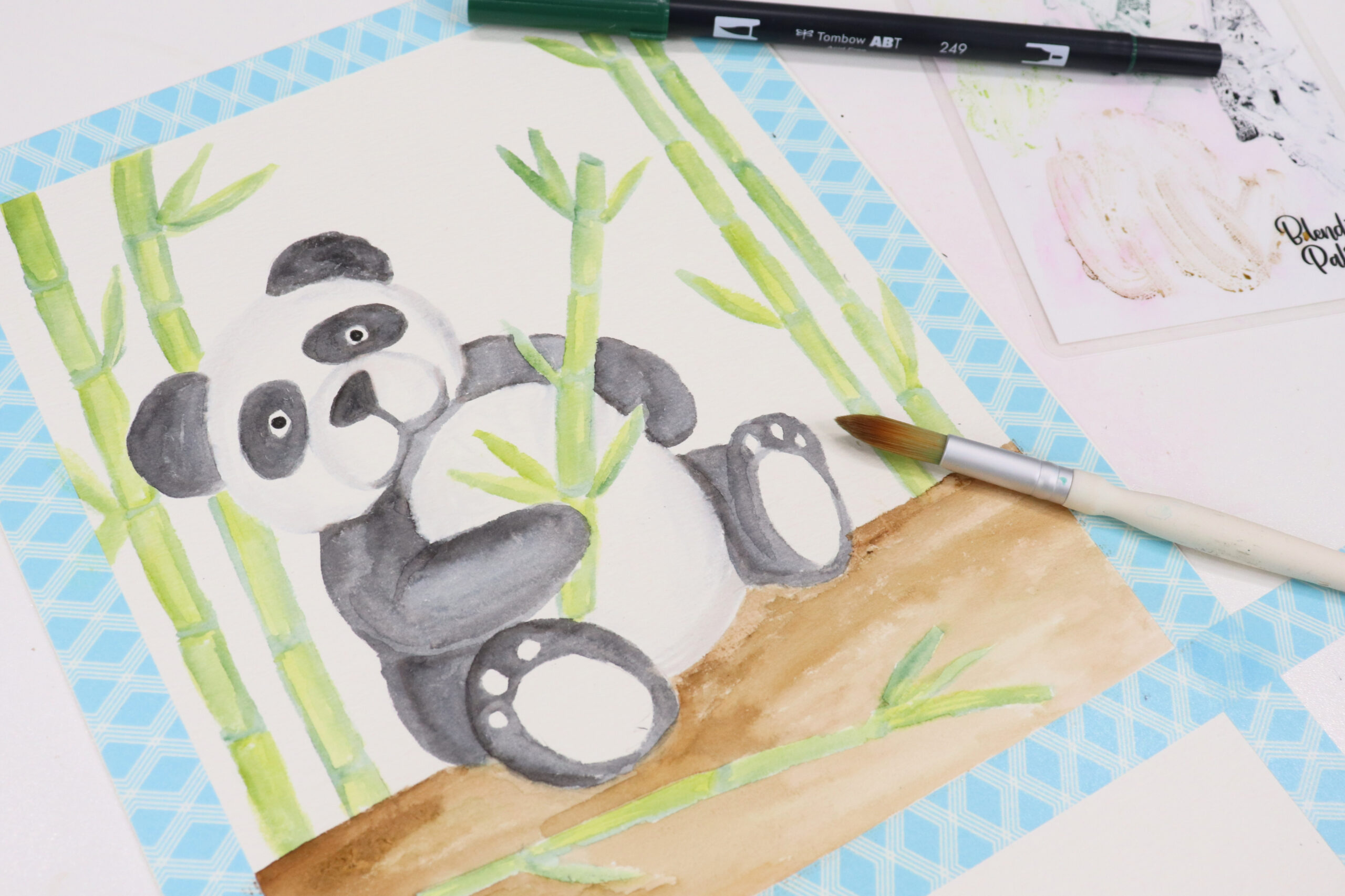
Step 5: Remove the tape.
Now, your painting will have a white border. It’s ready to display in any way you like and help you remember that favorite experience!
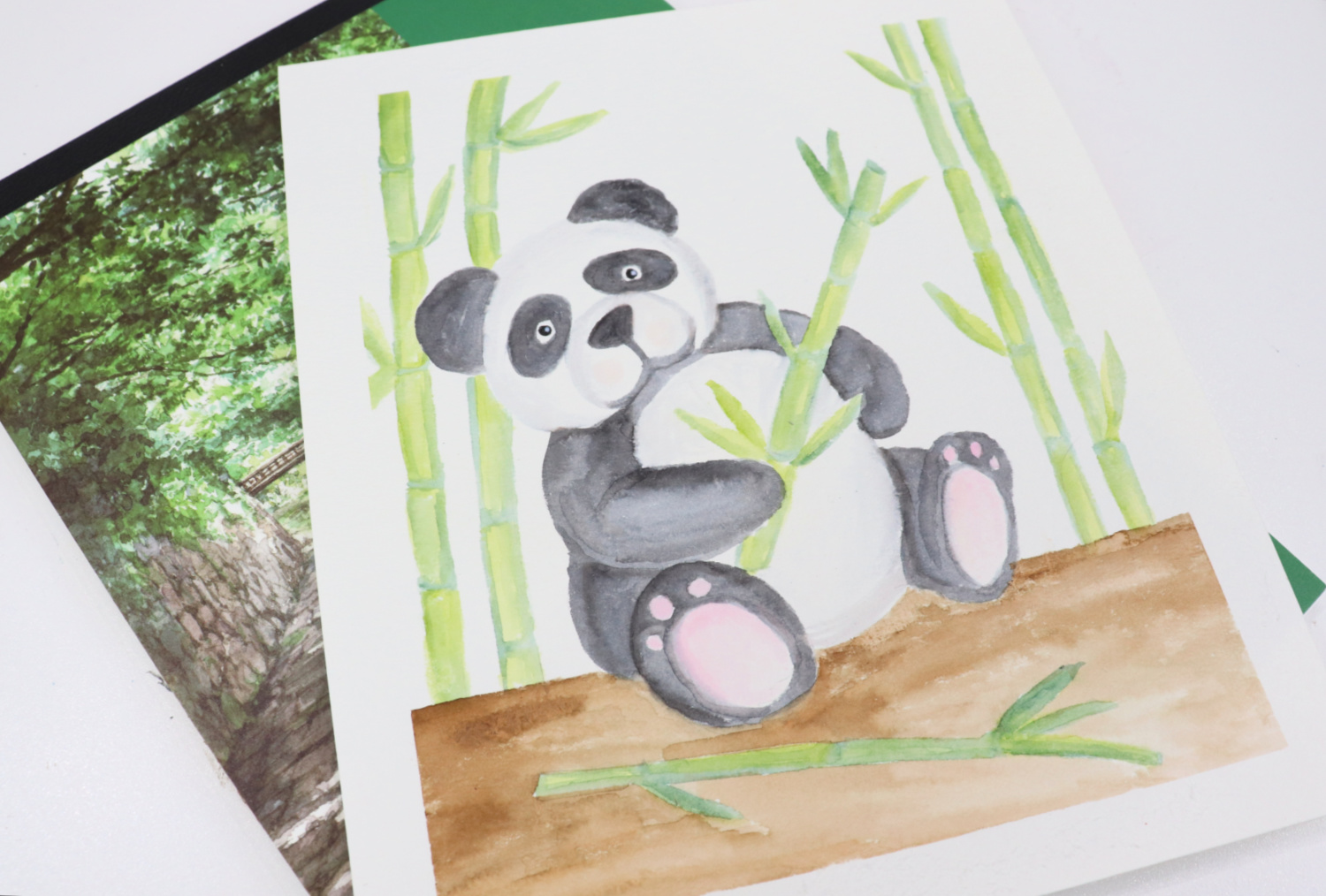
Don’t forget, the idea behind World Watercolor Month isn’t to become an expert at watercolor technique, it’s to have fun and express yourself! Let yourself create and bring that memory to life. Don’t worry about perfection, just enjoy blending colors and using your markers in a new way.
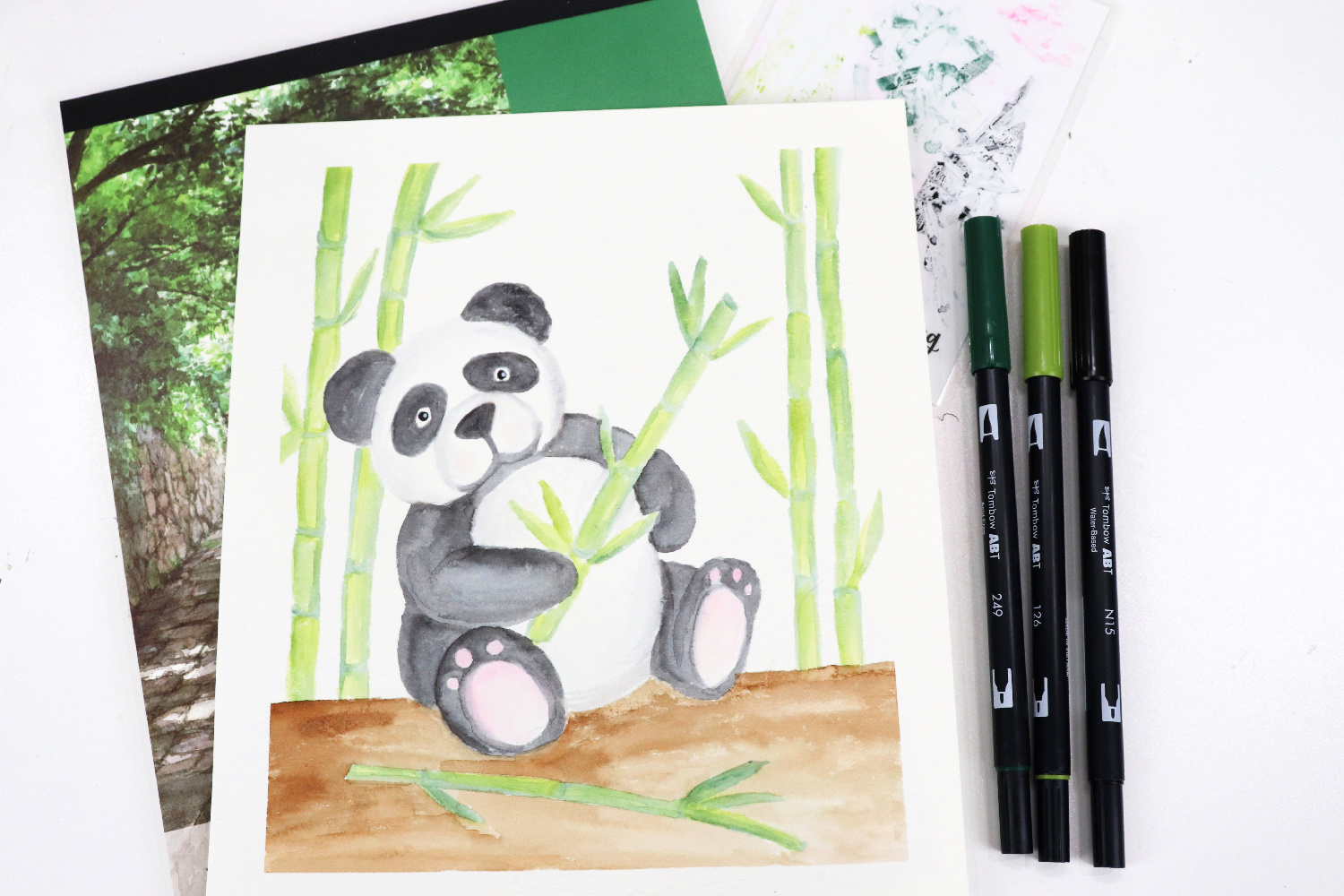
For more tutorials about using Dual Brush Pens for watercoloring, check out these other posts on the Tombow blog.
How to Get a Watercolor Effect with Dual Brush Pens
Have fun creating, and make sure to tag @amylattacreations and @tombowusa when you share your art! We can’t wait to see what your paint for World Watercolor Month!